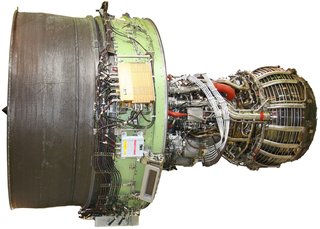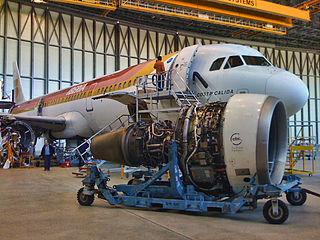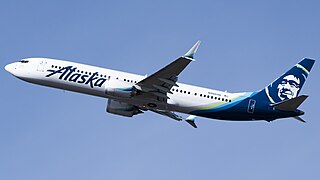
The Airbus A380 is a very large wide-body airliner that was developed and produced by Airbus. It is the world's largest passenger airliner and the only full-length double-deck jet airliner. Airbus studies started in 1988, and the project was announced in 1990 to challenge the dominance of the Boeing 747 in the long-haul market. The then-designated A3XX project was presented in 1994; Airbus launched the €9.5–billion ($10.7–billion) A380 programme on 19 December 2000. The first prototype was unveiled in Toulouse on 18 January 2005, with its first flight on 27 April 2005. It then obtained its type certificate from the European Aviation Safety Agency (EASA) and the US Federal Aviation Administration (FAA) on 12 December 2006.

The Boeing 787 Dreamliner is an American wide-body airliner developed and manufactured by Boeing Commercial Airplanes. After dropping its unconventional Sonic Cruiser project, Boeing announced the conventional 7E7 on January 29, 2003, which focused largely on efficiency. The program was launched on April 26, 2004, with an order for 50 aircraft from All Nippon Airways (ANA), targeting a 2008 introduction. On July 8, 2007, a prototype 787 without major operating systems was rolled out; subsequently the aircraft experienced multiple delays, until its maiden flight on December 15, 2009. Type certification was received in August 2011, and the first 787-8 was delivered in September 2011 before entering commercial service on October 26, 2011, with ANA.

ETOPS is an acronym for Extended-range Twin-engine Operations Performance Standards, which are safety standards developed by the International Civil Aviation Organization (ICAO) for twin-engine commercial passenger aircraft operations. They are a safety measure intended to ensure that in the event of a single engine failure, an aircraft will still be able to reach a diversion airport using the remaining operational engine. This may be at a reduced speed and/or height, and usually applies to flights over water or remote lands, typically routes previously restricted to three- and four-engine aircraft.

The General Electric GEnx is an advanced dual rotor, axial flow, high-bypass turbofan jet engine in production by GE Aerospace for the Boeing 747-8 and 787. The GEnx succeeded the CF6 in GE's product line.

Boeing Commercial Airplanes (BCA) is a division of the Boeing Company. It designs, assembles, markets, and sells commercial aircraft, including the 737, 767, 777, and 787, along with freighter and business jet variants of most. The division employs nearly 35,000 people, many working at the company's division headquarters in Renton, Washington or at more than a dozen engineering, manufacturing, and assembly facilities, notably the Everett Factory and Renton Factory, and the South Carolina Factory.

The Airbus A350 is a long-range, wide-body twin-engine airliner developed and produced by Airbus. The initial A350 design proposed by Airbus in 2004, in response to the Boeing 787 Dreamliner, would have been a development of the Airbus A330 with composite wings and new engines. Due to inadequate market support, Airbus switched in 2006 to a clean-sheet "XWB" design, powered by two Rolls-Royce Trent XWB high bypass turbofan engines. The prototype first flew on 14 June 2013 from Toulouse, France. Type certification from the European Aviation Safety Agency (EASA) was obtained in September 2014, followed by certification from the Federal Aviation Administration (FAA) two months later.

The Rolls-Royce Trent 1000 is a high-bypass turbofan engine produced by Rolls-Royce, one of the two engine options for the Boeing 787 Dreamliner, competing with the General Electric GEnx. It first ran on 14 February 2006 and first flew on 18 June 2007 before a joint EASA/FAA certification on 7 August 2007 and entered service on 26 October 2011. Corrosion-related fatigue cracking of intermediate pressure (IP) turbine blades was discovered in early 2016, grounding up to 44 aircraft and costing Rolls-Royce at least £1.3 billion.

Aircraft maintenance is the performance of tasks required to ensure the continuing airworthiness of an aircraft or aircraft part, including overhaul, inspection, replacement, defect rectification, and the embodiment of modifications, compliance with airworthiness directives and repair.

Jat Tehnika is a Serbian aerospace company providing aircraft maintenance, repair and overhaul. The company is based at Belgrade Nikola Tesla Airport and provides services for Air Serbia and other airlines across Europe.
TAP Maintenance & Engineering – the maintenance, repair and operations center of TAP Air Portugal airline – is located at Portela Airport, Lisbon, Portugal.

The Guimbal Cabri G2 is a two-seat light helicopter produced by Hélicoptères Guimbal, and powered by a reciprocating engine. Designed by Bruno Guimbal, a former Eurocopter engineer, it had its origins in the 1980s, and the first demonstrator flew in 1992. Following the granting of regulatory approval, the Cabri entered commercial service in 2008. In addition to its use within the general aviation sector and as a training rotorcraft, the Cabri G2 has also been used as the basis for unmanned aerial vehicles (UAVs).

FL Technics is a global provider of aircraft maintenance, repair and overhaul (MRO) services, headquartered in Vilnius, Lithuania. The company has Base Maintenance facilities in Lithuania and Indonesia and provides Line Maintenance support across Europe, Africa and Asia-Pacific.

The Boeing 737 MAX is the fourth generation of the Boeing 737, a narrow-body airliner manufactured by Boeing Commercial Airplanes, a division of American company Boeing. It succeeds the Boeing 737 Next Generation (NG) and competes with the Airbus A320neo family. The new series was announced in August 2011, first flown in January 2016, and certified by the US Federal Aviation Administration (FAA) in March 2017. The first 737 MAX delivered to a customer was a MAX 8 to Malindo Air, which accepted and began operating the aircraft in May 2017.

The Airbus A320neo family is an incremental development of the A320 family of narrow-body airliners produced by Airbus. The A320neo family is based on the previous A319, A320, and A321, which was then retrospectively renamed the A320ceo family.

Delta TechOps is the maintenance, repair and overhaul (MRO) division of Delta Air Lines, headquartered at Hartsfield-Jackson International Airport in Atlanta, Georgia. With more than 9,600 employees and 51 maintenance stations worldwide, Delta TechOps is a full-service maintenance provider for the more than 900 aircraft that make up the Delta Air Lines fleet. In addition to maintaining the Delta Air Lines fleet, Delta TechOps also provides MRO solutions and support to more than 150 third-party operators around the world, making it the second largest MRO provider in North America and the seventh largest worldwide.

AerSale, Inc. is a Doral, Florida-based global supplier of aftermarket commercial jet aircraft, engines, used serviceable materials, and aeronautical engineering services to passenger and cargo airlines, government entities, leasing companies, multinational OEMs, and independent MROs.
This is a list of aviation-related events in 2018.
This is a list of aviation-related events in 2019.

The Boeing 737 MAX was initially certified in 2017 by the U.S. Federal Aviation Administration (FAA) and the European Union Aviation Safety Agency (EASA). Global regulators grounded the plane in 2019 following fatal crashes of Lion Air Flight 610 and Ethiopian Airlines Flight 302. Both crashes were linked to the Maneuvering Characteristics Augmentation System (MCAS), a new automatic flight control feature. Investigations into both crashes determined that Boeing and the FAA favored cost-saving solutions, which ultimately produced a flawed design of the MCAS instead. The FAA's Organization Designation Authorization program, allowing manufacturers to act on its behalf, was also questioned for weakening its oversight of Boeing.
The Challenge Group is an international air cargo group. It employs 850 staff members across several countries, has a fleet of eight Boeing 747 and 767 aircraft.















